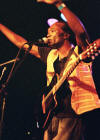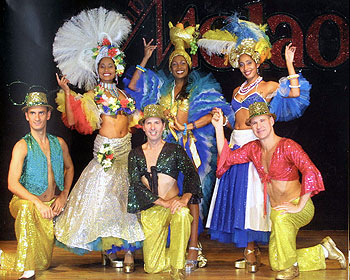
Samba
More than Just a Name
“Aquí pelo nosso mato, Qúestava então mui tatamba, Não se sabia de outra coisa, Senão a dança do samba.”
"Around our village here, Which was quite stupid by then, There was nothing else we knew, Besides the samba dance." 6
What Does It All Mean?
"Samba" refers to prayer and the invoking of ones personal "orixa", god, or saint. Samba music is of the people. It is the lower class Afro-Brazilian community and an expression of their culture, the morros, people of the hillside slums. But still, Samba is more than just this.6
The lyrics represent more than the culture and tradition. The lyrics of the samba are the way they live, the things they believe, and don't believe in. In the 1920's, 1930's, and 1940's Samba musc revolved around three major topics. Samba talks about the “malandro”, the black hustler, women, and their love affairs, this way of music does not sound much different than the music and lyrics of the songs of urban hip hop today. The malandro does not follow the norm, he is a criminal, he fights against the social restrictions. Samba, until much later, was male dominated and the women of the Samba lyrics were thus malandras, fantasy women, or women bored with their domestic lives.2
The Culture of the Samba
The samba music and dance, like so many other great music genres, was not readily accepted by the masses. The above quote was taken from an article published in 1838 and written by Miguel do Sacramento Lopes Gama. Lopes, like many other people of the upper class ridiculed this new genre of music. Samba was initially believed to be sinful and the people of "high society" did all they could to repress this new music. However Samba music continued to be popularized and now encompasses more than just one culture. Samba combines several different cultures, especially the musical aspects of both African and Latino cultures. 2
 In the beginning of the sixteenth century slaves were brought from Africa to work the plantations of South America. Over time Samba evolved from what was initially an attempt to preserve their African culture. During this period of time, the spread of religion was of most importance and for those who did not know the difference, the helpers, gods, or protectors that the African people worshiped were much like the saints of the Catholic religion. The slaves were therefore able to worship their orixas through song and practice, while others believed that they were practicing Christianity and helping the spread of religion.
In the beginning of the sixteenth century slaves were brought from Africa to work the plantations of South America. Over time Samba evolved from what was initially an attempt to preserve their African culture. During this period of time, the spread of religion was of most importance and for those who did not know the difference, the helpers, gods, or protectors that the African people worshiped were much like the saints of the Catholic religion. The slaves were therefore able to worship their orixas through song and practice, while others believed that they were practicing Christianity and helping the spread of religion.
After slavery was abolished in 1888, the people of Africa migrated south and began living near Rio de Janeiro, the birthplace of the Samba music. Despite the initial reaction to it and the attempts to suppress it, the Samba music continued to become more and more popular. The Samba is more than just music, it is a dance and way of celebration. The dance was a large part of the popularizaton of it. In August of 1928 first Samba “school” opened under Ismael Silva. The school was called “Deixa Falar” or “Let them Gossip” a most appropriate title. It was just a club really however the people that gathered their taught and learned Samba from each other and they felt it very appropriate to refer to it as a school.6
Samba music continued to evolve and become a part of the Brazilian culture and people, more than just those of African descent. Samba music started out with flues, stringed instruments, and hand-held percussions, later in the 1930's the “battuques” or African drums were added.6 Samba became integrated with the Brazilian Carnaval, a large celebration with parades and celebrations. Samba became a way of celebrating the African culture and showing appreciation for it.